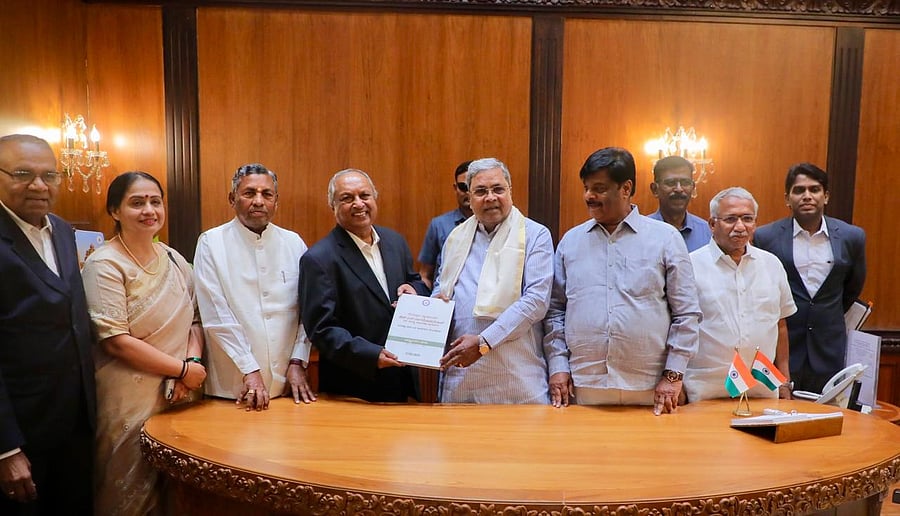
80% SCs literates, but only 7.41% are graduates: Das panel
Credit: X/@siddaramaiah
In yet another indicator of the educational backwardness of Scheduled Castes (SCs), the Justice Nagamohan Das Commission’s report on internal reservation for Scheduled Castes (SCs) has found that merely 7.41% of literates are graduates.
As per the survey report, the SC community has a literacy rate of 80.85% (86.54 lakh), which is higher than the literacy rate of SCs as per the 2011 census. However, only 6.33 lakh (7.41%) of these are graduates. That means, only 5.91% of 1.07 crore SCs are graduates.
According to a source, the high dropout rate and abysmal figure of graduates is mainly due to the social stigma, especially in higher education institutions, followed by economic factors.
“As the Supreme Court has specified, literacy is an indicator to measure the social situation of a community. However, literacy alone isn’t sufficient to obtain gainful employment. As education is a fundamental right and as primary and middle-school education are universal and compulsory, several SCs have this level of education. However, most castes haven’t been able to obtain degrees, post-graduations, technical, vocational education,” the report notes.
The number of degree holders is an indicator of progress for SC youths, the report adds.
While the general educational status of the SCs remains poor, the report has flagged that the condition of most backward communities and those with less population is even worse.
According to the report, the Banjara and Bhovi (both “touchable” communities), Holeya and Madiga communities have got more representation than others. As many as 8.06 lakh of the 11.12 lakh SC pre-university certificate holders are from these four communities.
Amongst the 6.33 lakh graduates, 4.49 lakh (71%) hail from these four communities. The pattern follows in professional education too, with 67.13% engineering graduates and 69.57% medical graduates hailing from these four communities.
On the other hand, as many as 25 castes are yet to have a single person with a technical degree. As many as 14 castes are yet to have an engineering graduate, while 40 don’t even have an MBBS doctor. As many as 54 communities don’t have a single PhD holder.
“Since smaller communities don’t have any political representation, they don’t have any exposure. Representatives from smaller communities may not be able to win direct elections and the government should take steps to make them Rajya Sabha members or MLCs. However, governments don’t seem to have any will to extend such facilities to these communities,” Dalit activist Indudhara Honnapura said.
“The ongoing fight for internal reservation was amongst the big communities and not the smaller ones. Since their numbers are small and they are not electorally significant, they are constantly ignored by political parties,” he added.
